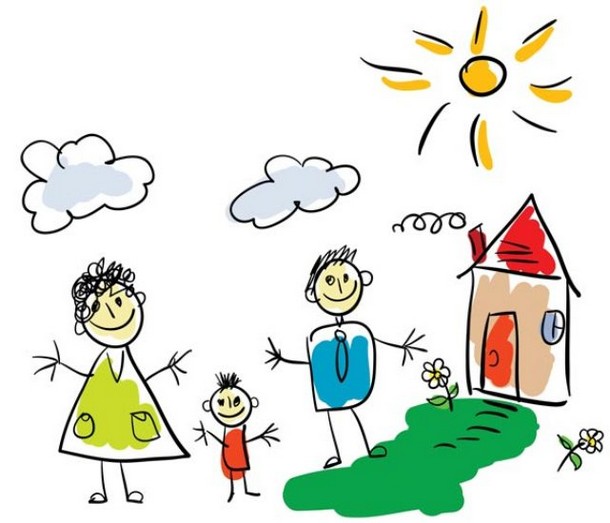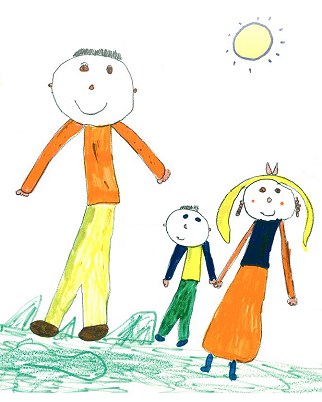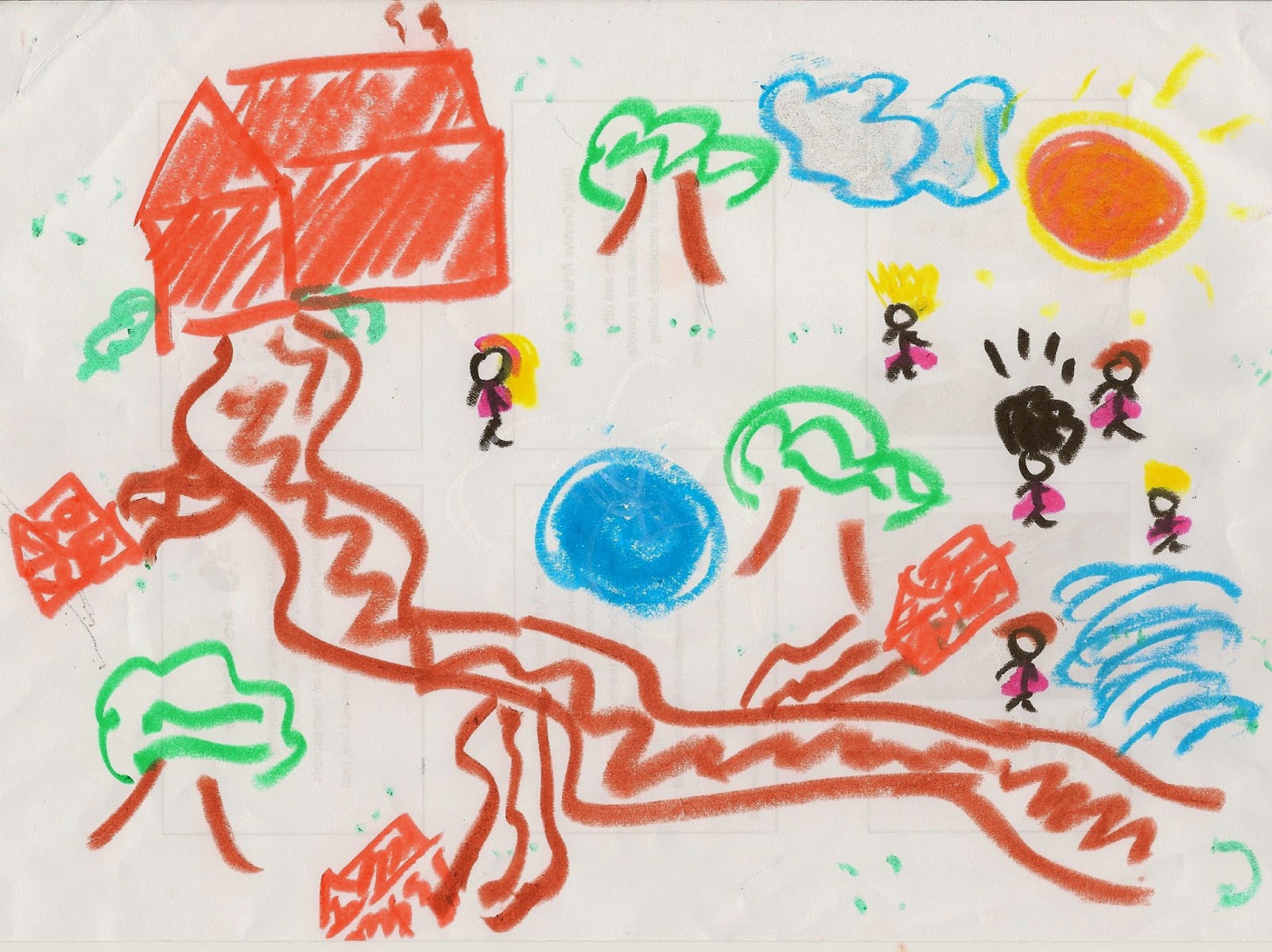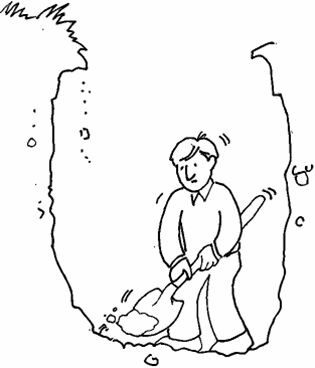 From the moment a child is big enough to hold a crayon and put it to paper, drawing is a great way to communicate and understand what they are thinking. Interpreting children's drawings becomes easier as they get older, and you can learn a surprising amount from what they create. Understanding their drawings at every stage of their development is a great tool for parents.
From the moment a child is big enough to hold a crayon and put it to paper, drawing is a great way to communicate and understand what they are thinking. Interpreting children's drawings becomes easier as they get older, and you can learn a surprising amount from what they create. Understanding their drawings at every stage of their development is a great tool for parents.
Understand How Children's Drawings Develop
There are three stages of drawing for a child: Scribbling, Pre-Schematic, and Schematic stages. Here’s what to expect from each of them.
1. Scribbling
At this stage, there is no realism in the pictures, and they are mostly just marks on a page. It might seem like there is nothing there, but sometimes children create something called “fortuitous realism.” This means that when the scribbles are done, you might be able to see certain shapes or drawings in what appeared to be simple marks.
2. Pre-Schematic
At this stage, children are attempting to create things that they see with their eyes. They might draw the simplest things, such as faces, stick figures, cars, trucks, trees, and houses. There are usually no realistic details to these drawings. At the end of the stage, they begin adding in certain things that set their ideas apart, such as flowers in front of a house or clothes on the stick figures.
3. Schematic
In this stage there are many details, and the child might use words and symbols. They might use clever shapes, such as a “v” for birds. They draw as realistically as their skills allow, and they show the picture from a certain viewpoint or perspective. They can often tell a clear story with these drawings.
How to Interpret Kids' Drawings
Everyone hopes to find meaning in a child’s drawings. Sometimes drawings are just drawings, with nothing more than a fun playtime showing itself on the page. But sometimes, interpreting kids' drawings means that you discover a deeper layer to what they are thinking and feeling. It is very important not to read too much into a drawing, but instead to allow the child to tell you what the drawing means to them. Asking questions, such as what the people in the drawing are doing, can reveal things from your child that you might never see yourself.
General Rules
But you can also look into the pictures for thoughts of your own when it comes to interpreting children’s drawings.
- Gender and color preference. For instance, darker colors tend to be used by a child who is more dominant or demanding. Girls tend to like warmer colors, while boys tend to go for the cooler colors in the box. Green tends to mean a child is more creative, yellow means happiness, and red is the color of excitement – and one that most children love to use.
- The position on the page matters, too. Those who put drawings on the left side are looking to the past and to a nurturing presence, while the right side is the future and a need to communicate. Drawings that are at the bottom of the page often mean insecurity or feelings of inadequacy.
- When drawing figures, the size matters. Those who are larger are the more dominant personalities, while those without arms are non-aggressive. Those with exaggerated hands might mean someone who is aggressive, while tiny feet might mean a child is feeling unstable or off balance.
Notes: Keep in mind that these are general observations about children’s artwork, and might not reveal anything at all about your particular child. Interpreting children’s drawings is always best done with the child telling you what the drawing is about – simply ask them what they think.
Here are some examples of what children might draw and what you might interpret from it:
1. The Stick-Figures
 A child often draws family members in a particular order, and might place themselves close to the person they feel closest to in the family. They might also have different facial expressions for family members that can reveal how that member seems to act most of the time. They can also use size to indicate how important people are to them – the bigger the person is, the more they might matter to that child, or the more dominant they might be to them.
A child often draws family members in a particular order, and might place themselves close to the person they feel closest to in the family. They might also have different facial expressions for family members that can reveal how that member seems to act most of the time. They can also use size to indicate how important people are to them – the bigger the person is, the more they might matter to that child, or the more dominant they might be to them.
2. Very Detailed Drawings
 The more detail a child puts into the drawings of people around her, the more she sees the individuality. For instance, drawing her brother with glasses or her sister wearing a dress speaks to the way she views them on a daily basis. The position of the family members in the picture might also indicate closeness; if the family is together and happy, they will be grouped together.
The more detail a child puts into the drawings of people around her, the more she sees the individuality. For instance, drawing her brother with glasses or her sister wearing a dress speaks to the way she views them on a daily basis. The position of the family members in the picture might also indicate closeness; if the family is together and happy, they will be grouped together.
3. Digging a Hole
 A child who has recently experienced the death of a loved one might be drawing holes in the ground, including pictures of filling them in or digging them. The position of family members around the hole reveals who the child feels closest to or how the family coped with the loss. A child who is by themselves in the picture means that they feel very alone.
A child who has recently experienced the death of a loved one might be drawing holes in the ground, including pictures of filling them in or digging them. The position of family members around the hole reveals who the child feels closest to or how the family coped with the loss. A child who is by themselves in the picture means that they feel very alone.
What Emotions Do These Drawings Reveal?
Many emotions can be inferred from your child’s drawings, but don’t get too carried away with the things they might mean until your child has had time to explain them to you. However, there are some points that researchers have found that might display what a child is really feeling. Here are a few examples:
- Impulsive child: Big figures, no necks, and asymmetry of limbs.
- Anxious child: Clouds, rain, flying birds, no eyes on the figures
- Shy child: Short figures, no nose or mouth, tiny figures and arms close to the body
- Angry child: Big hands and teeth, long arms, crossed eyes
- Insecure child: Monstrous figures, tiny heads, no hands, and slanted figures
If you want to learn more about interpreting children’s drawings, there are books out there that can help. Here’s one of them: http://www.amazon.com/Understanding-Childrens-Drawings-Malchiodi-ATR-BC/dp/1572303727

